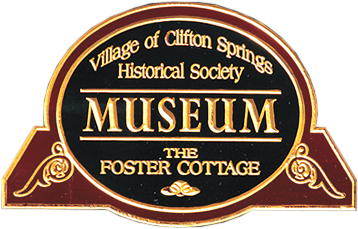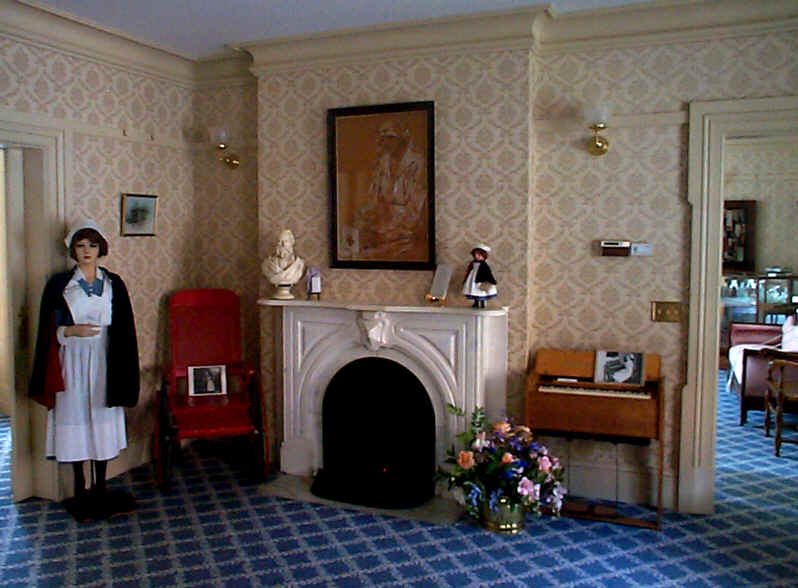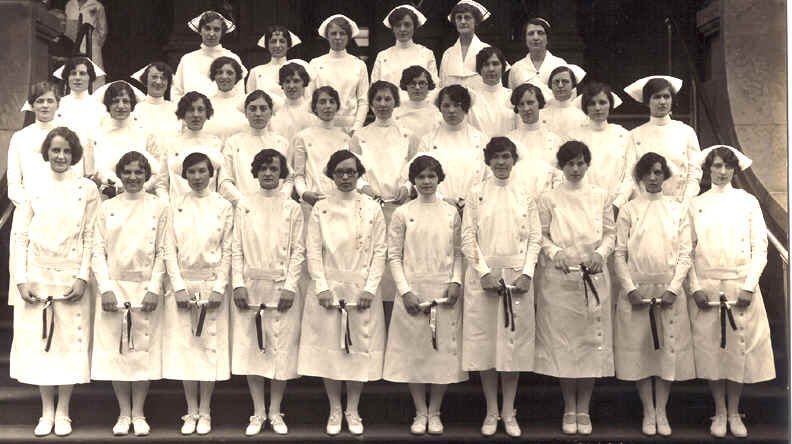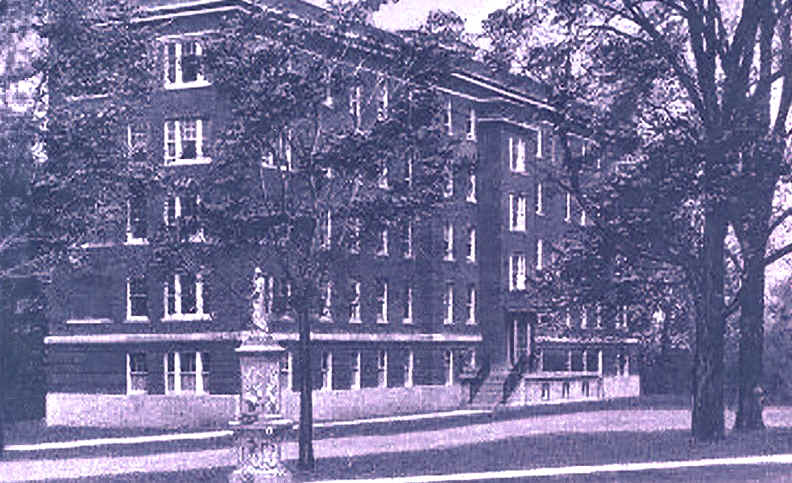Virtual Tour of Foster Cottage Museum
CENTER ROOM FRONT-DOWNSTAIRS
(Dedicated to the Clifton Springs Nursing School)
This room is given over to items related to the School for Nurses that was begun here by Dr. Foster in 1892.
The first students were required to complete 2 years of training prior to becoming a fully accredited nurse.
After a few years of operation and the increase in medical knowledge, this course of study was increased to
three years. Following the opening in 1892, word quickly spread of the fine school and how well and safe it
was to send your daughter here for study. There were strict standards of conduct and the girls who came here
to become nurses were given every opportunity to expand their abilities. The first class graduated in 1894.
The school continued to be popular until the depression days of the 1930's when costs began to increase and
additional schools of training had sprung up on the Rochester area.
In all over that period of some 40 years, some 576 young ladies came here and successfully completed their
studies to become part of the nursing community.
THE HIPPOCRATIC OATH
I swear by Apollo the physician, by Æsculapius, Hygeia, and Panacea, and I take to witness all the gods, all the goddesses,
to keep according to my ability and my judgment, the following Oath.
"To consider dear to me as my parents him who taught me this art; to live in common with him and if necessary to share my goods
with him; to look upon his children as my own brothers, to teach them this art if they so desire without fee or written promise;
to impart to my sons and the sons of the master who taught me and the disciples who have enrolled themselves and have agreed to
the rules of the profession, but to these alone the precepts and the instruction. I will prescribe regimen for the good of my
patients according to my ability and my judgment and never do harm to anyone. To please no one will I prescribe a deadly drug
nor give advice which may cause his death. Nor will I give a woman a pessary to procure abortion. But I will preserve the purity
of my life and my art. I will not cut for stone, even for patients in whom the disease is manifest; I will leave this operation to
be performed by practitioners, specialists in this art. In every house where I come I will enter only for the good of my patients,
keeping myself far from all intentional ill-doing and all seduction and especially from the pleasures of love with women or with men,
be they free or slaves. All that may come to my knowledge in the exercise of my profession or in daily commerce with men, which
ought not to be spread abroad, I will keep secret and will never reveal. If I keep this oath faithfully, may I enjoy my life and
practice my art, respected by all men and in all times; but if I swerve from it or violate it, may the reverse be my lot."
With the influx of a new group of young ladies into the village each year, they were sure to attract the attention
of the area young men. Many of the graduates were to marry local or area boys and thus the school not only produced a fine group of
nurses, it was also the beginning of many an upstate family.
The nurses were first housed in a large building located half way up West Main Street, which prior to this time had been a school
for young ladies. It was called the Seminary. Some of the nursing students took up residence within the community but as the Sanitarium
grew a larger place to house the students was necessary.
Funds were sought and a new building of red brick was raised on the top of East Hill on the site of the old Powell Hotel. A prior visitor
to the Sanitarium by the name of Maxwell donated some $50,000 towards the project and when completed in 1927 it was named Maxwell Hall
after him. This served as a nurse's residence for many years after the nursing school closed.
In the glass case are several articles relating to the nursing school and its students. On the wall is a short history of the school
land a list of all of the young ladies who graduated from it between 1894 and 1934 when it closed.
The manikin shows the nursing outfits as designed by Mrs. Foster. On graduation, the nurses adopted a black ribbon on their caps and
wore a pin of the school. Rules and regulations were strict and nursing students were expected to attend daily worship services.
On the wall over the fireplace is a sketch made by famous artist, Robert Reid. Mr. Reid came here in the 1920's following a stoke,
which paralyzed his right side. While here he taught himself to paint anew using his left hand. It is not known at what time in his
career he made the sketch but it was given to a Mrs. Leland of this village. Her son, Roderic, donated it to the museum. The historical
society is proud to have this fine example of his work. Many of his other works will be found in the major art galleries of the nation.
Also in this room, is a small pump organ, once owned by Mrs. Henry Foster. So far as we know, it is still operative.



